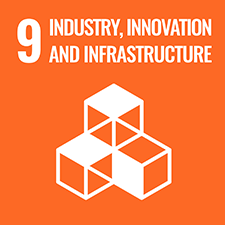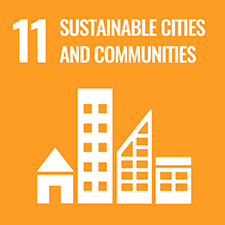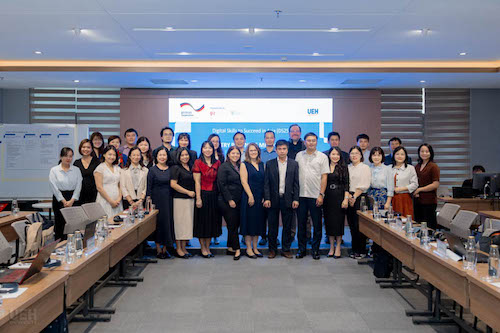![[Podcast] Introducing the current situation of Digital Transformation in the Vietnamese Public Sector and Proposing the Development Policy](/images/upload/img_background/ueh-bg-103233-092022.png)
[Podcast] Introducing the current situation of Digital Transformation in the Vietnamese Public Sector and Proposing the Development Policy
16 Sep, 2022
Digital transformation and technological advances have altered the people’s habits of using public services increasingly; thereby, the expectations for State management agencies are increasing. At the same time, the public sector is also facing the opportunity to improve service quality towards higher efficiency and transparency through technology application in the operation and management process. However, digital transformation is one new problem in theory and practice. In accordance with the analysis of digital transformation in the three fields of health, education and public finance, the authors have clarified the challenges of digital transformation practice in the public sector in Vietnam today. From this foundation, some policy implications are given.
Digital transformation in the public finance sector
*Electronic Customs – Solutions for transparency enhancement
The Viet Nam Automated Cargo Clearance System and the Vietnam Customs Intelligence Information System (VNACCS/VCIS) are being applied in the Customs sector. VNACCS/VCIS includes the following applications: Electronic declaration (e-Declaration); Electronic Manifest (e-Manifest); Electronic Invoice (e-Invoice); Electronic payment (e-Payment); Electronic C/O (e-C/O); Selectivity; Risk profile management/risk criteria; Management of import and export enterprises; Customs clearance and release of goods; Monitoring and control.
Compared to the traditional customs procedures, the Viet Nam Automated Cargo Clearance System (VNACCS) has digitized the processes from: (1) Registration of customs declarations, (2) Inspection of goods, (3) Checking, determining prices and calculating taxes, (4) Paying taxes and other receivables. In addition, with the electronic customs clearance system, the connection among the Ministries/Departments becomes more convenient through the one-stop mechanism and shortening the green flow processing time to 1-3 days. In addition to increasing management efficiency, e-customs bring great benefits to businesses, such as: Simplifying administrative procedures, saving time and costs for businesses; Making tax payments independent of space and time; Minimizing information errors, Unifying the database of management agencies, Ensuring timely customs clearance of goods through coordination with commercial banks.
Digital transformation has clearly improved efficiency in the customs field; at the same time, strengthening the trust and the satisfaction of businesses through increasing transparency in the management stages of state management agencies and shortening the time to carry out related procedures.
*Electronic tax system – A “dual” solution for the tax field
Until the beginning of 2021, the electronic tax declaration system has been widely deployed to 100% of tax branches under 63/63 Provinces and Cities across the country with the number of businesses registering to use the service reaching the rate of 98.86%. It can be stated that the deployed electronic tax system has comprehensively digitized processes from tax registration, tax declaration, tax payment, and tax refund - bringing a ‘win-win’ solution for the tax field.
For businesses and individuals (referred to as users), the electronic tax system helps to cut down the time and cost of carrying out administrative procedures. Users of electronic tax services can completely declare and pay taxes at the office and monitor the results of the processing on the online system. In addition, service users receive a lot of support from the management agency (due to the reduced time in terms of directly processing documents) for those problems in the obligation performance.
For State management agencies, the most obvious benefit of the electronic tax system is to streamline work activities and promote specialization in tax administration agencies. The tax industry has decreased the time for processing and storing documents as well as limited errors through information technology applications. In addition, the electronic tax system has performed very well in interdisciplinary online public services listed as real estate or automobile registration fees and so on.
Digital transformation in the healthcare sector
*Minimizing subclinical costs through IoT application
Recently, many medical organizations have integrated IoT to provide healthcare solutions, from diagnosis and treatment to disease management and monitoring anytime, anywhere. The resolution of PACS (Picture Archiving and Communication System) is a specific example of IoT applications currently being used and exploited effectively by many medical facilities around the world. With the characteristics of imaging devices operating in accordance with DICOM standards and digital standards, PACS allows to connect, to store and to transfer data from imaging devices listed as magnetic resonance imaging (MR) scanners, computed tomography (CT), digital x-ray (DR), X-ray (CR), positron emission tomography (PET), ultrasound (Ultrasound), endoscopy (ES), mammography photos (MG), etc. to medical facilities for medical examination and treatment. In short, PACS is a medical imaging technology that provides a place to store, to retrieve, to manage, to distribute and to present images. This minimizes the traditional form of film printing at medical facilities, creating a favorable working environment for professional work in medical examination and treatment. The operation model of PACS shows that medical facilities applying PACS can improve the efficiency of line directing, save subclinical costs, etc.
*AI Application in high-tech diagnosis and treatment
Applications in cancer treatment: IBM WFO (IBM Watson for Oncology) supports doctors when making evidence-based treatment regimens. Currently, IBM WFO has collected and managed 15 million medical records, 300,000 world medical studies and 400,000 continuously updated medical books on common cancers listed as breast, lung, stomach, colon and rectum cancers. After the doctor enters the patient’s information into IBM WFO, the system will process and suggest treatment regimens in terms of the priority order of effectiveness and evidence for that regimen. The doctor will ultimately decide which regimen is the best for the patient.
Applications in diagnostic imaging: Computer Aided Detection (CADe) or Computer Aided Diagnosis (CADx), machines with absolutely huge memory capacity will easily help doctors. Doctors analyze medical images much faster and more accurately.
Applications in paraclinical tests: The computer will help doctors analyze and compare laboratory tests accurately and quickly, especially gold test thresholds, molecular biology tests, and genetics. In cancer treatment, targeted therapies are also of special interest to scientists. By using AI to analyze tumors at the molecular level and localize, the most suitable immunotherapy is selected because it does not affect healthy cells during treatment.
*Telemedicine – Solutions to problems of health industry
Telemedicine is a model of providing health care services, even at a distance. Remote medical examination and treatment include diverse different forms listed as: remote diagnosis and consultation (Remote diagnosing and teleconsulting system); remote monitoring system (Remote monitoring system); Remote intervention system; distance training (Remote education system, e-learning) and so on. This not only responds promptly in the case of taking advantage of the golden hour in an emergency but also contributes to reducing the rate of bypass when the patient stays at the primary level but still has the opportunity to be examined by a more confined specialist.
In addition to the specific applications mentioned above, the digital transformation application in healthcare helps hospitals build electronic medical records, a solution that not only saves the cost of using documents but also helps to store patient health records, medical information search. In terms of preventive medicine, using electronic medical records will help the functional sector detect outbreaks early so that they can surround and prevent the disease from spreading. In the pharmaceutical industry, electronic medical record management helps drug regulatory agencies better manage prescription insert treatment and drug research stages.
Digital transformation in the education sector
* Distance learning (E-learning): a form of distance teaching and learning, is based on modern technological devices and Internet connections. Instructors and students can interact on the E-learning system using computers, tablets, or smartphones with Internet connection.
* Simulated education: Augmented Reality (AR) and virtual reality (VR) technologies are widely deployed in training and vocational training because it helps learners to have authentic experiences through 3D simulation, through which the lecture becomes practical, easy to understand-easy to remember, and attracts learners.
* Smart library: A model that combines library with information technology and learning support services aims to provide the best services to meet users' needs.
Problems and policy recommendations in terms of digital transformation activities in the public sector
The digital transformation process in Vietnam's public sector has been implemented; in fact, some issues need more attention from management levels.
Firstly, the fact that the policy lacks synchronization has not created an agreement, a consensus and correct understanding of digital transformation yet. On June 3, 2020, the Prime Minister signed and promulgated the National Digital Transformation Program with the goal of building a digital government, digital economy and digital society. This is a continuation and concretization of Resolution 52 of the Politburo on actively participating in the 4th Industrial Revolution. However, some organizations and individuals are not completely united on the concept of digital transformation; actually, they think this process only includes the application of technological advances to the work process or the digitization of data at the agency. From misunderstanding, it has led to incorrect ways of doing things, lack of consistency in direction, scattered investment and waste to society. Therefore, the issue of clarifying the content of the definition of digital transformation is an important requirement today.
Secondly, information and communication technology (ICT) infrastructure is an important contributor to the success of the digital transformation process. However, at present, infrastructure has not been synchronously invested in localities. Within the digital transformation process, the national digital infrastructure must be one step ahead to meet the new requirements of the explosion of smart devices connected to the Internet of things (IoT) and machine-to-machine communication. The nature of the Internet is open, based on open technology and open protocols; therefore, Vietnam, for safe development, needs to master the Internet infrastructure and cyberspace. Building digital infrastructure requires the participation of the entire political system, businesses and people from the central to local levels; there must be a legal framework for digital infrastructure, especially regarding data issues, and personal information protection. The two main issues that need to be solved in parallel are: (1) ensuring synchronous technology infrastructure to deploy digital transformation activities suitable to each industry and field and (2) ensuring operational technology capacity. Regarding capital, it is necessary to have appropriate priority mechanisms and policies to effectively mobilizing resources from society, the private sector, and foreign investment.
Thirdly, human resources for digital transformation are lacking, especially high-quality human resources. Technological solutions and a change in working mechanisms and processes are accompanying the digital transformation process. Currently, engineers and programmers are “being hunted” by businesses with attractive income and remuneration. Meanwhile, public organizations face a lot of constraints on salary and bonus policies, leading to failure to retain talented people. In order to build high-quality human resources, it is necessary to issue and perfect policies to really treat and attract talents listed as salary, welfare, promotion opportunities, career development opportunities, autonomy and responsibility empowerment at work, transparency in the recruitment process, and so on. In the long term, it is necessary to promote the training of lecturers and researchers in digital technology, digital economy, and digital society, listed as artificial intelligence technology, blockchain, big data, cloud computing, digital finance, digital business, digital communication, and so on.
Fourthly, many regulations and workflows are inadequate or inappropriate when applying the digital transformation. Therefore, it is necessary to improve the legal system related to digital transformation by issuing guiding circulars, reviewing and adjusting working processes, and changing laws related to the digital transformation process. For example, in the health sector, if a medical examination and treatment model is to be deployed, remote consultation helps reduce the burden of upper-level medical facilities, limit contact with crowds, reduce the risk of cross-infection, and improve medical capacity. In the case of basic infrastructure, it is necessary to issue circulars regulating operating conditions in the network environment through industry standards. Suppose the Law on Medical Examination and Treatment has not been revised, especially in case problems arise upon remotely signing prescriptions. In that case, the remote medical examination and treatment solution will be congested. In terms of the education industry, regulations on online teaching and regulations on the organization of online exams need to be studied, promulgated, and guided by other educational institutions. In addition, the digital transformation process is associated with data collection, storage, and sharing. Therefore, depending on each industry, data issues need to be specified. Completing the legal corridor on digital transformation is one of the top priorities for conducting digital transformation. When a series of new technologies arise from the digital transformation process, leading to changes in business requirements, the accompanying legal system needs to be changed and supplemented as fast as possible.
Please refer to the full research “Digitalization in Public sector” at here. Author group: Dr. Đinh Công Khải; Dr. Nguyễn Văn Dư; MSc. Nguyễn Lê Hoàng Long – Faculty of Government, UEH School of Economics, Law and Government. This is is series of spreading researches and applied knowledge from UEH with “Research Contribution For All – Nghiên Cứu Vì Cộng Đồng” message, UEH would like to invite dear readers to look forward to Newsletter ECONOMY NO. #59.
News, photos: Author, UEH Department of Marketing – Communication
Voice of: Ngọc Quí


![[Research Contribution] Green Psychology and Pro-Environmental Behavior](/images/upload/thumbnail/ueh-thumbnail-638812267201614209.png)



![[Research Contribution] Circular City – An Inevitable Trend for Vietnam’s Tourist Cities](/images/upload/thumbnail/ueh-thumbnail-638811882320559599.png)



![[Research Contribution] The Effect of AI-Integrated Digital Art Exhibitions on Word-of-Mouth Marketing](/images/upload/thumbnail/ueh-thumbnail-638811879342569279.png)




